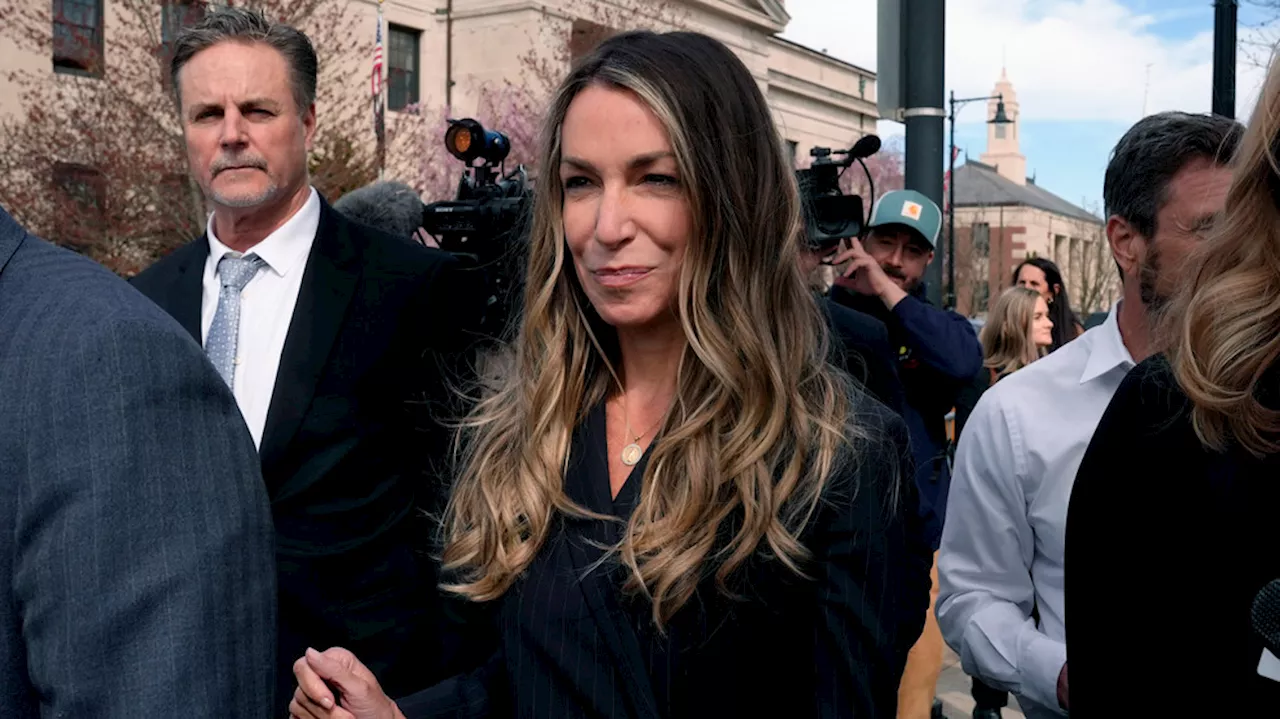“Delinquent: Our System, Our Kids” is a special series examining Cuyahoga County's juvenile justice system through the eyes of the kids who go through it.
Juvenile crimes have victims, and the court is supposed to consider the harm they’ve suffered. The Plain Dealer/cleveland.com spoke to some of the victims about their views on the system. “We didn’t get any justice,” says the stepfather of Bobby, a motorcyclist killed by teenagers who were drag racing.CLEVELAND, Ohio – Taking advantage of the mild July night, motorcycle enthusiasts Bobby Henry and Brianca Palmer went out for a 2 a.m. ride.
Bobby’s body hit the front of the vehicle so hard that his glasses were embedded in the windshield, the Cuyahoga County Prosecutor’s Office said. The force catapulted Brianca’s body down the road. The prosecutor’s office charged the teens with aggravated vehicular homicide and involuntary manslaughter, but they didn’t meet other requirements for mandatory transfer to adult court, a process called bindover. Still, the crash “warranted severe penalty,” a spokeswoman for the office says, so the prosecutor requested a discretionary bindover to adult court, where convictions would carry a potential sentence of up to eight years in adult prison.
After O’Malley’s ruling, prosecutors withdrew the bindover request for the male driver. In juvenile court, both teens pleaded to two counts of aggravated vehicular homicide and failing to stop after an accident. O’Malley sentenced them to six months in a group home, with up to three years probation to follow. They also are barred from getting drivers licenses until they’re 21.They wanted the teens to be tried as adults, or at least incarcerated for two years.
Delinquent: For Davion’s parents, ‘justice’ fell short after he was killed by a teen driver, but new scholarship in his memory brings peaceOhio’s “Marsy’s Law” grants victims the right to be included in all proceedings. It also ensures their views about appropriate sanctions and what qualifies as justice are considered in plea deals and sentencing decisions. In the end, though, prosecutors and judges make decisions based on what they feel is best in the case.The Plain Dealer/cleveland.
“They were kids,” he says. “Throwing them in jail for a long time is not going to bring my daughter back...It definitely doesn’t help me, and it doesn’t help them.” On that point, Bobby’s parents don’t disagree. But without first holding the offenders accountable for their actions, they fear that reform isn’t possible. They never advocated for locking the drivers up and throwing away the key, but “we think that the punishment should fit the crime.”“We’re without a person in our lives, and these people are home with their families again,” Lesko says. “We just wish they would have been taught a better lesson.
“All for what? For the judge to say ‘we tried,’ and now everyone is blaming the offender when in all reality this was avoidable by just handing out an appropriate sentence proportionate to the original crime,” the family said in a social media post. After Bobby was killed, however, “she was a different person,” Jankovic says. The girl started struggling in school and “was having a hard time making good choices,” the mother says. The parents put her in counseling and are taking other steps to correct problematic behavior, they say.“The people that committed the crimes, yeah, they need rehabilitated, but there’s not enough focus on the victims of these crimes,” Lesko says. “The victims are just supposed to carry on.
The man wasn’t the only victim in Greater Cleveland that night. His assailants were soon accused of two more carjackings on Cleveland’s near West Side. One also would be charged with rape.Polo grew up in a high-crime area in Cleveland’s Buckeye-Woodhill neighborhood. His mother drank and smoked pot while pregnant with him, she would later tell his probation officer. The family was referred to the Cuyahoga Division of Children & Family Services, though the reasons are unclear.
Problems were escalating at home, too, as he disregarded curfew and defied his mother. She told a probation officer she wanted him locked up. The car had a tracking device that police could follow. When officers tried pulling it over, the car accelerated and crashed into a pole. Polo and his 13-year-old brother emerged and ran.
One of the friends, a 27-year-old man, tried remaining calm, as he stared down a gun pointed feet from his face. “I gotta make a move – either run or do something,” he recalls thinking. Acting on instinct, he reached out and took a swing at the gun, making contact.Polo ran. That was 45 minutes before the Lakewood carjacking.
A psychological evaluator determined Polo’s IQ was far below average, and he suffered from intellectual development disorder. He was bound over to adult court, where he was indicted onHe was sent to a mental health facility for treatment before his trial. But just before his release, he escaped, sparking a nine-day manhunt and a $5,000 reward forPolo pleaded guilty to nine counts, including aggravated robberies, rape and escape.
For the 27-year-old Tremont victim who swatted away the fake gun, any bitterness was short-lived. He wonders what was going on in the young attackers’ lives at the time. The third time she mourned a son’s death was in 2021. Her 13-year-old was killed in a drive-by shooting, a case of mistaken identity. During a final breath, he cried, “Where’s my mommy?” she recounts.
Doug tried to cope but struggled. He quit playing basketball – it reminded him of Martell – and began hanging out with rough kids. A judge found Doug delinquent and put him on probation. But in the five months since charges were brought, the court did little to help, Anita says now. She pushed for Doug’s enrollment in a behavioral program, she recalls, but that didn’t happen till he was officially adjudicated.
Maurco, 9, told his mom that if he were killed, he wanted to be cremated, to be close to her forever. Weeks later, Anita’s family packed one side of a courtroom for the sentencing, clad in white sweatshirts honoring Maurco. Many carried cremation lockets, containing a bit of Maurco’s ashes. When the judge asked if family members wanted to speak, they described Maurco as an upbeat entrepreneur who delighted neighbors by shoveling snow, raking leaves, stuffing tamales and assisting with a lemonade stand.
Stepping onto her back porch, she saw a local security guard confronting three juveniles, who appeared to have broken into her Kia. One youth seemed to reach for his waistband, she recalls. Over the radio, Sandy heard a medical report come in. Through the crackling static, a voice declared that a youth had been shot. He was 15. The bullet ripped through his eye.“I just started praying for him,” she says now. “I didn’t mean to shoot him. I was just trying to protect my property.”Within the world of criminal justice a Venn Diagram exists, with overlap among victims and offenders.
Because the car thieves never flashed a gun at her, the odds of escaping an indictment were against her. During that time, her mother, who had medical issues, passed away. It was difficult for Sandy to find the mental space to grieve, which compounded her guilt. When it was Sandy’s turn to speak, she turned to face her victim’s mom. “I apologize to the mother,” she said tearfully. “I’m a mother, too, and I didn’t mean to hurt her baby.”
In that moment, Sandy released a torrent of monthslong, pent-up emotion. She wasn’t a monster, she needed her victim’s mother to know. Davion Flanagan built his once underdeveloped body into a muscular powerhouse on the football field, becoming the starting running back for the Strongsville Mustangs.Those traits drew him to team sports, where his natural talent and sportsmanship shined. He built his once underdeveloped body into a muscular powerhouse on the football field, becoming the starting running back for the Strongsville Mustangs.
That next morning, around 5:30 a.m., Davion and that friend were passengers in a car that crashed into the side of a brick warehouse. The force of the impact tore Davion’s aorta and damaged internal organs, killing him instantly. His 20-year-old friend, Dominic Russo, who was in the passenger seat, was also killed. The driver, two days shy of her 18th birthday, survived.“It was like a gut punch. I couldn’t breathe for seconds. I couldn’t respond to the police officer.
They also wanted the driver to repent and reform, providing some assurance that she wouldn’t hurt anyone else after her eventual release. That process, they expected, would require time, making her lengthy incarceration even more necessary. Later, when an adult court judge found the driver guilty of two counts of murder, among other charges, the Flanagans were comforted to know the convictions carried an automatic sentence of life in prison with no chance at parole for 15 years. They felt cheated, however, when the judge ordered those sentences to be served at the same time, rather than consecutively, which would have added up to 30 years.
“It’s up to her,” Jaime says. “She gets to make her choices and decide how she’s going to live her life after this.”For years, Jaime had been using a painting in their home portraying a man rising from the ashes of a fire to teach her children about overcoming hardship, like that which they’d been born into. You can’t always control what happens to you, she’d tell them, but you can decide how to respond to it.
@Exmeter Delinquent Juvenile Justice Cuyahoga County
United States Latest News, United States Headlines
Similar News:You can also read news stories similar to this one that we have collected from other news sources.
 Delinquent: Read all the stories from Week 3; discretionary bindovers have fallen in Cuyahoga, but transfers“Delinquent: Our System, Our Kids” is a special series examining Cuyahoga County's juvenile justice system through the eyes of the kids who go through it. Unlike mandatory bindovers, discretionary transfers require a juvenile judges’ approval, based on an assessment of whether youth can be rehabilitated in the juvenile system.
Delinquent: Read all the stories from Week 3; discretionary bindovers have fallen in Cuyahoga, but transfers“Delinquent: Our System, Our Kids” is a special series examining Cuyahoga County's juvenile justice system through the eyes of the kids who go through it. Unlike mandatory bindovers, discretionary transfers require a juvenile judges’ approval, based on an assessment of whether youth can be rehabilitated in the juvenile system.
Read more »
 We all tend to think we can read others better than they read us.Be cautious if you feel you are more insightful than other people or other groups. This is a standard human cognitive bias.
We all tend to think we can read others better than they read us.Be cautious if you feel you are more insightful than other people or other groups. This is a standard human cognitive bias.
Read more »
 Jurors hear about Karen Read's blood alcohol level as murder trial enters fifth weekA former Massachusetts police toxicologist has testified that a woman accused of leaving her Boston police officer boyfriend for dead in a snowbank after a night of drinking was still legally intoxicated or close to it roughly eight hours later
Jurors hear about Karen Read's blood alcohol level as murder trial enters fifth weekA former Massachusetts police toxicologist has testified that a woman accused of leaving her Boston police officer boyfriend for dead in a snowbank after a night of drinking was still legally intoxicated or close to it roughly eight hours later
Read more »
 Jurors hear about Karen Read's blood alcohol level as murder trial enters fifth weekA former Massachusetts police toxicologist has testified that a woman accused of leaving her Boston police officer boyfriend for dead in a snowbank after a night of drinking was still legally intoxicated or close to it roughly eight hours later.
Jurors hear about Karen Read's blood alcohol level as murder trial enters fifth weekA former Massachusetts police toxicologist has testified that a woman accused of leaving her Boston police officer boyfriend for dead in a snowbank after a night of drinking was still legally intoxicated or close to it roughly eight hours later.
Read more »
 Karen Read murder trial continues for second week of testimonyThe Karen Read murder trial continues for a second week of testimony on Monday.
Karen Read murder trial continues for second week of testimonyThe Karen Read murder trial continues for a second week of testimony on Monday.
Read more »
 Delinquent: Read all the stories from Week 4; Cuyahoga’s juvenile court has programs to rehabilitate youth of“Delinquent: Our System, Our Kids” is a special series examining Cuyahoga County's juvenile justice system through the eyes of the kids who go through it. Courts are designed to provide programs to rehabilitate kids when they offend and divert them away from future crime. We look at how several of them are working.
Delinquent: Read all the stories from Week 4; Cuyahoga’s juvenile court has programs to rehabilitate youth of“Delinquent: Our System, Our Kids” is a special series examining Cuyahoga County's juvenile justice system through the eyes of the kids who go through it. Courts are designed to provide programs to rehabilitate kids when they offend and divert them away from future crime. We look at how several of them are working.
Read more »
